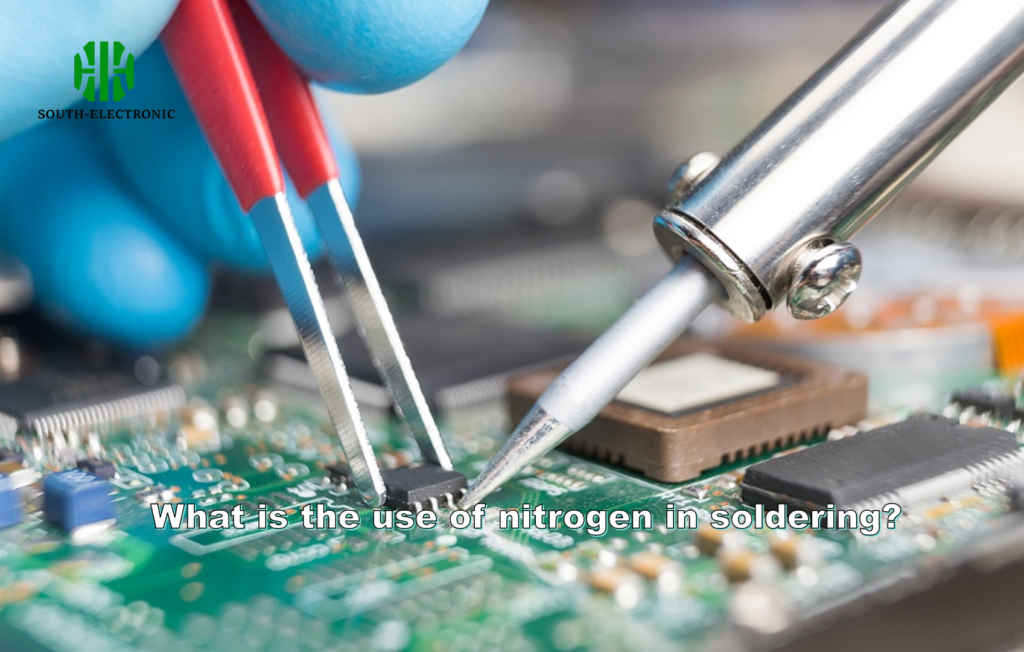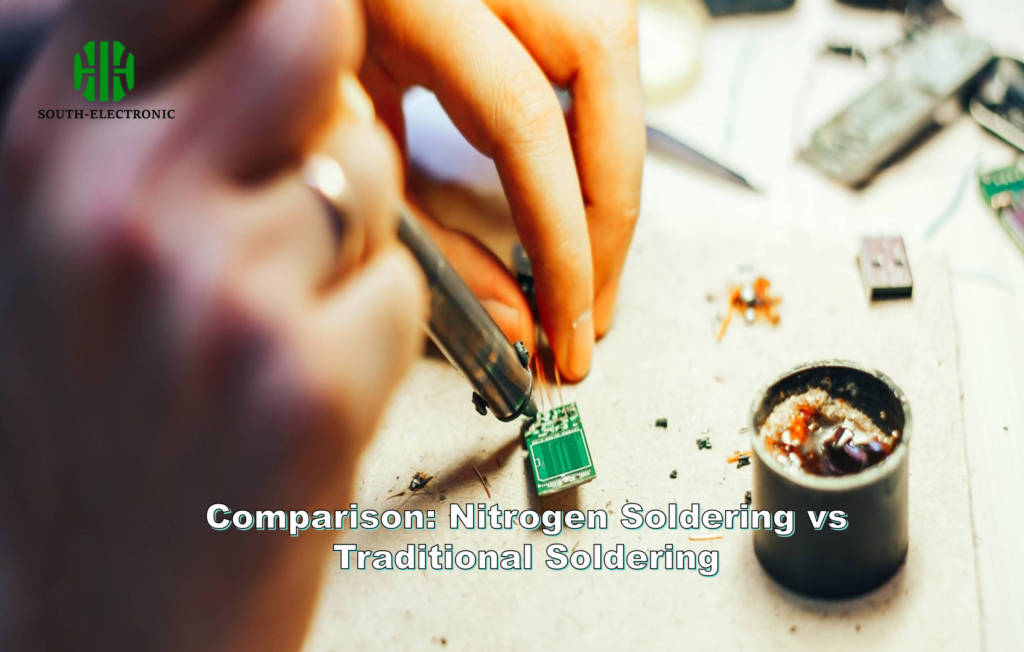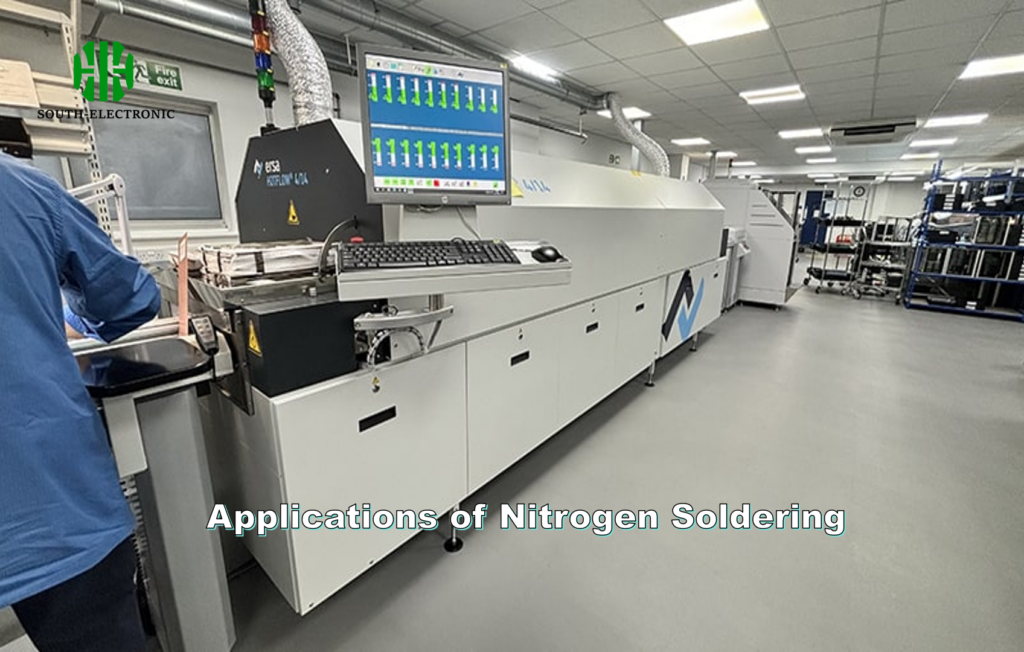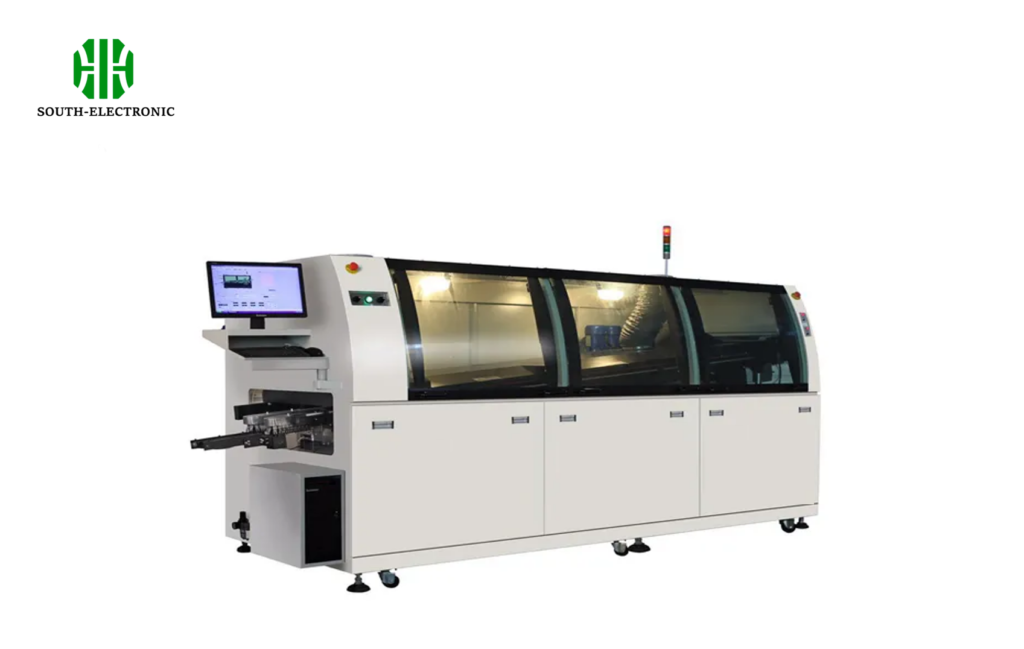How Does Nitrogen Soldering Work?
Nitrogen soldering is a big deal in the world of electronics manufacturing. It’s a way to make sure solder joints are high quality and don’t get all oxidized during the soldering process. Nitrogen soldering means you use nitrogen gas to create a special atmosphere around the solder joint. This atmosphere stops oxygen from reacting with the metal, which keeps it from getting oxidized. Oxidation is a big reason why solder joints go bad.
During the process:
- Nitrogen is introduced into the soldering environment.
- The nitrogen atmosphere prevents the formation of oxides by displacing oxygen.
- As a result, the soldering material forms a cleaner and stronger bond, reducing defects.
What is the use of nitrogen in soldering?

Nitrogen is used in soldering to prevent oxidation, helping to create stronger and more reliable solder joints. The inert nature of nitrogen allows for better heat transfer and reduces the likelihood of short circuits.
Key Benefits of Nitrogen in Soldering:
- Oxidation Reduction: Nitrogen displaces oxygen, preventing the formation of oxides.
- Improved Heat Transfer: Nitrogen helps in the uniform transfer of heat across the solder joint, making the process more efficient.
- Enhanced Solder Quality: Using nitrogen results in cleaner, stronger, and more reliable solder joints.
Comparison: Nitrogen Soldering vs Traditional Soldering

Let’s compare nitrogen soldering with traditional soldering methods to understand the advantages and disadvantages:
| Feature | Nitrogen Soldering | Traditional Soldering |
|---|---|---|
| Oxidation Resistance | High (Prevents oxidation) | Low (Prone to oxidation) |
| Solder Joint Quality | Higher quality, cleaner joints | Lower quality, more impurities |
| Cost | Higher initial setup cost | Lower setup cost |
| Heat Distribution | More uniform due to nitrogen | Less uniform |
| Defect Rate | Lower defect rate | Higher defect rate |
Applications of Nitrogen Soldering

Nitrogen soldering is widely used across several industries, especially in electronics manufacturing and assembly. Some of the most common applications include:
1. Surface Mount Technology (SMT) Reflow Soldering
- SMT reflow soldering is a process where electronic components are mounted on a PCB (Printed Circuit Board). Nitrogen helps reduce oxidation and improves the quality of the solder joints, making it a preferred method in large-scale manufacturing.
2. Wave Soldering
- In wave soldering, liquid solder is passed over the PCB to create solder joints. Nitrogen is introduced to create an inert atmosphere, reducing oxidation and enhancing the overall soldering quality.
3. Selective Soldering
- Selective soldering is used for soldering specific components on a PCB, and nitrogen is utilized to create a more controlled and oxidation-free environment.
Image idea: Diagram illustrating nitrogen reflow soldering vs traditional methods.
Nitrogen Soldering Equipment

The equipment used in nitrogen soldering processes is designed to create and maintain an inert atmosphere during soldering. The most common types of equipment are:
1. Nitrogen Soldering Irons
- These irons release nitrogen gas directly at the soldering tip, preventing oxidation. Nitrogen soldering irons are used in both manual and automated soldering applications.
2. Reflow Ovens with Nitrogen Atmosphere
- These specialized ovens are used in large-scale SMT reflow soldering processes. The nitrogen atmosphere in the oven ensures better heat transfer and prevents the oxidation of the solder joints.
3. Wave Soldering Machines
- Wave soldering machines use nitrogen to maintain an inert atmosphere during the wave soldering process. This prevents the formation of defects and ensures higher-quality solder joints.
So, in conclusion, nitrogen soldering is a good thing to do in electronics manufacturing, especially if you want to make good solder joints. It helps stop oxidation and makes the heat go where you want it to go, so you can make better solder joints. It costs a lot of money to get started and to keep going, but it’s worth it because you can make better stuff and you don’t have to fix as many things later. That’s why a lot of people like it.



